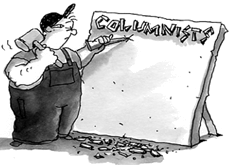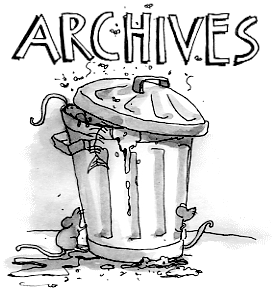Concerning Champagne
 Wendler on Wine •
Wendler on Wine •  Tuesday, December 5, 2017
Tuesday, December 5, 2017 Champagne - a product as much driven by marketing and legend as by the content of the bottle ... Ten myths exploded in a new critique of the bubbly libation ... Justinian's wine man G.D. Wendler explains, just in time for Christmas
 Champagne: one-and-a-half billion bottles in chalk cellars
Champagne: one-and-a-half billion bottles in chalk cellars
FRENCH Champagne is often associated with celebration, success, prosperity , sometimes pretension.
Champagne and how the Champenois make and market their product to consumers has always been a matter of controversy. This controversy is explored by Robert Walters in his book: Bursting Bubbles - A secret history of champagne and the rise of the great growers (second edition Champagne - A Secret History).
Walters is a champagne importer based in Melbourne. His book is evidence of long experience in Champagne and with le champagne.
Walters contends:
"It is impossible to understand champagne and its history without grasping that it was the traders, the negociants, the business people of the region, and not the growers, who launched and drove the success of sparkling champagne."
He warns the reader his book is "not a wine guide", that he is "not completely impartial", his arguments are not his alone nor is his book a vehicle for "Grandes Marques bashing".
Lamentably, there have been few books over the last 50 years dealing solely with the Champagne region of France as a subject of viticultural interest. Historically the most accessible books on champagne appear to be: Champagne by Patrick Forbes (1967), The History of Champagne by Andre Simon (1971), Champagne by Tom Stevenson (1988) and The Champagne Guide by Tyson Stelzer (2017) now in its 5th edition.
 The Champagne region is about 140 kilometres north-east of Paris and covers some 33,000 hectares comprising Montagne de Reims, Cote des Blancs , Vallee de la Marne, Cote de Sezanne and the Cote des Bar.
The Champagne region is about 140 kilometres north-east of Paris and covers some 33,000 hectares comprising Montagne de Reims, Cote des Blancs , Vallee de la Marne, Cote de Sezanne and the Cote des Bar.
Apparently a bottle of French champagne is opened somewhere in the world every minute of every day. Stockpiles in the chalk cellars of Champagne are estimated to be somewhere around 1.5 billion bottles.
The centrepiece of Walters' disquisition is the identification and destruction of ten myths or bullshit stories associated with the champagne narrative, namely :
1. The myth that Dom Perignon, a blind 17th century Benedictine monk of the Abbaye Saint-Pierre d'Hautvillers, was the father of champagne. He wasn't, nor was he blind or the first to make blended champagne. Despite the bronze statue allegedly of Dom Perignon that greets visitors to Moet & Chandon in Epernay there is no historical record of what Dom Perignon looked like. However, the enterprising monk did discover the usefulness of cork bark stoppers for the excellent white still wine produced by the Abbey.
2. That champagne was the original sparkling drink. No, the English in the seventeenth century were the first to make sparking drink in the form of apple cider.
3. Grand cru vineyards produce the best wines. This is a fallacy when any village in Champagne has both excellent and poor quality vineyards. Also, Walters reminds us of the shocking history and practise of using pulverised city rubbish or boues de ville as fertilizer in the vineyards of Champagne. This was outlawed in 1998.
4. Placing a spoon in the top of a champagne bottle helps preserve the bubbles. Nonsense! Use a traditional champagne stopper if you wish to keep your champagne fresh.
5. Only three grape varieties are utilised to make champagne. Not so. There are at least seven varieties of grape used in the production of champagne.
6. Blending makes better champagne. Maybe, but some of very best champagne comes from single vineyards – Salon, Krug's Clos du Mesnil and Clos d'Ambonnay, Philiponnat's Clos des Goisses and,in my opinion, a number of modest profile grower/producers e.g. Vollereaux, Pierre Peters, Gimonnet & Fils, Paul Dethune, Hure Freres, to name a few.
7. Bubbles in a glass of champagne are formed on imperfections on the surface of the glass. Recent scientific investigation has concluded that microscopic imperfections on the surface of a glass are places where microscopic cellulose fibres accumulate and thus allow bubbles in champagne to form.
8. Champagne should be served in a flute style glass. Not necessarily. A tulip shaped glass is likely to give the greatest pleasure to the champagne aficionado.
9. Champagne is mentioned in the Bible. There was no sparkling wine in biblical times.
10. The smaller the bubbles the better the quality of the champagne. Rubbish! Bubble size is determined by the gas pressure in a bottle of champagne. Champagne quality is determined by the quality of the grapes and the excellence of the methode traditionnelle.
 Rather than concentrate his attention on the pioneering and high profile champagne houses such as Moet & Chandon, Bollinger, Pol Roger, Krug, Taittinger, Veuve Clicquot, Charles Heidsieck and so on, Walters showcases and promotes a number of excellent small Champagne grower/producer labels such as Jacques Selosse, Jerome Prevost-La Closerie, Egly-Ourient, Agrapart & Fils, Lamandier-Bernier and Ulysse Collin.
Rather than concentrate his attention on the pioneering and high profile champagne houses such as Moet & Chandon, Bollinger, Pol Roger, Krug, Taittinger, Veuve Clicquot, Charles Heidsieck and so on, Walters showcases and promotes a number of excellent small Champagne grower/producer labels such as Jacques Selosse, Jerome Prevost-La Closerie, Egly-Ourient, Agrapart & Fils, Lamandier-Bernier and Ulysse Collin.
May I suggest that when raising a glass of champagne during this festive season you reflect a moment upon satirical magazine Charlie Hebdo's typically Gallic response to the religious fascists who two years ago murdered twelve of their employees and injured eleven others:
Ils ont les armes. On les emmerde, on a le champagne – (They have guns, fuck them, we have champagne!)
G.D. Wendler










Reader Comments